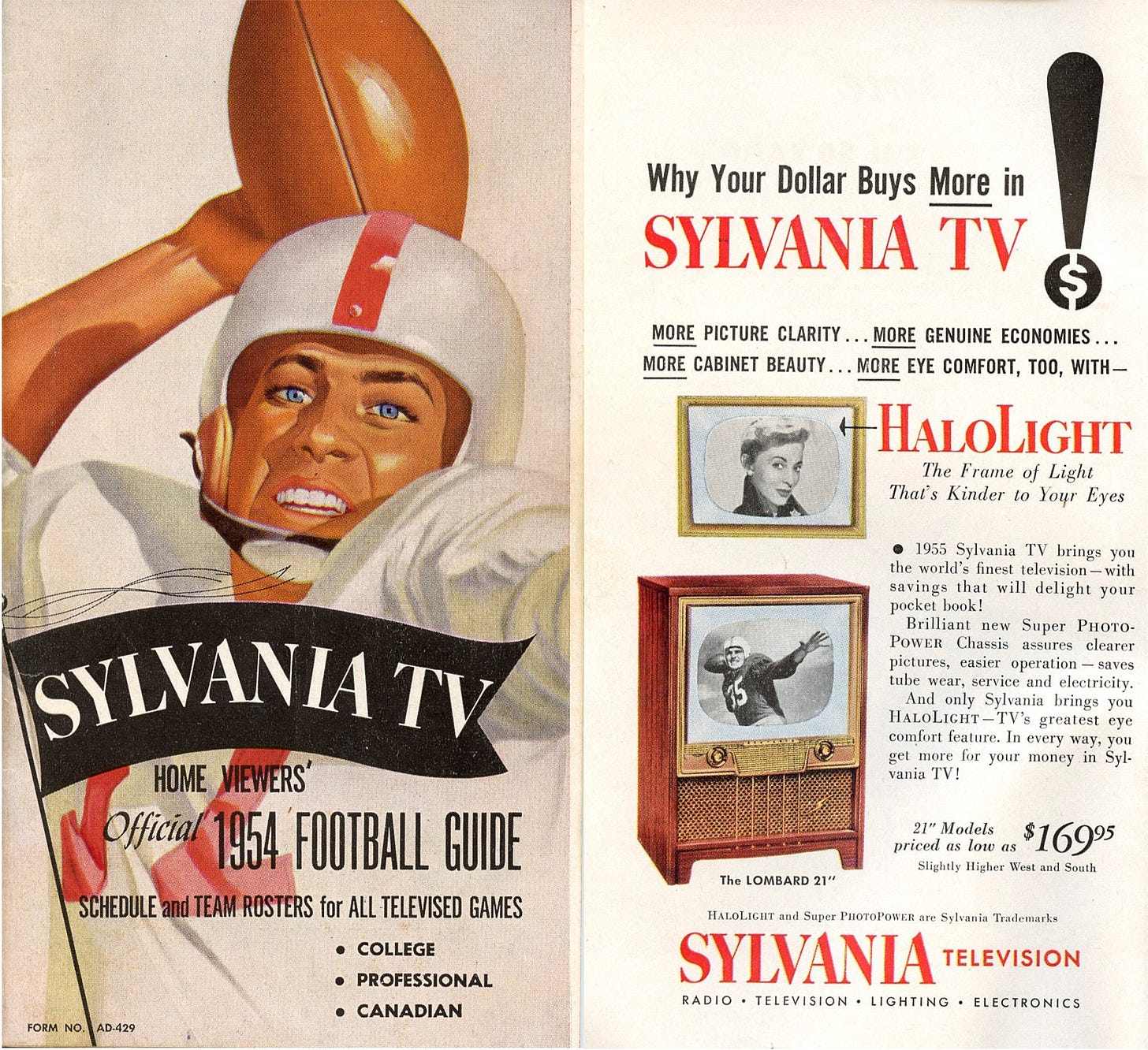Today's Tidbit... When USC Used Their Heads And Lost
You can't believe everything you read, but some stories are appealing enough that you want to accept them, even if you can't confirm them. Here's one of them.
I came across this one when reading the Sylvania TV Home Viewers' Official 1954 Football Guide, which had an article covering "hard to believe" events in football's past. I confirmed most of the story with period newspaper articles; if this tale is not entirely true, it is close to being so.

The story concerns the 1926 USC Trojans, who finished 8-2 under Howard Jones, outscoring their opponents 317-52. The Trojans breezed through their first five games, easily defeating Whittier, Santa Clara, Washington State, Occidental, and Cal, before facing a 6-0 Stanford team in the Coliseum.
The Pop Warner-coached Stanford Indians had beaten Occidental by a score comparable to USC's victory over the Tigers, and their only test came the week before against Oregon. Most saw the game as a battle for Pacific Coast Conference supremacy, the winner earning the inside track for the 1927 Rose Bowl.
Played before 78,500 fans -claimed to be the largest crowd to see a football game until more than 100,000 saw Army-Navy play later that season- the game proved to be a defensive struggle. USC scored twice in the second quarter. One came early in the quarter on a short run, and the second came when Stanford's Bill Hoffman fumbled, and the ball popped into the waiting arms of a USC defender, who ran 50 yards for a touchdown, but Manuel Laraneta missed both kicks so the score stood 12-0.
Stanford fought back that quarter as Hoffman went over the right guard for a second-quarter score. Unfortunately, the kick by substitute halfback George Bogue boinked off the upright.

Stanford scored a second time in the third quarter on a 41-yard pass from fullback Bill Hoffman to Dick Hyland to make it 12-12. Bogue was still in the game and dropped back to attempt the kick. As his toe connected with the ball, he sent a low kick toward the USC line, where it struck USC left end Red Badgro in the head and ricocheted over the crossbar to add one point for Stanford. Unfortunately for the Trojans, the ball bouncing off Badgro's head ended the scoring for the day as Stanford won 13-12.
USC beat Oregon State, Idaho, and Montana in their next three PCC games to finish 5-1 in the conference, one back of Stanford, who tied Alabama in the Rose Bowl one month later.
However, USC's season was not over. They still had to play Notre Dame, the first contest of that notable series, in a game Rockne sometimes described as the greatest he ever saw. Notre Dame was 8-1, coming off their famous loss to Carnegie Tech, a game Rockne skipped so he could watch the Army-Navy game in Chicago.
As was the case all year, center Jeff Cravath dominated play for the Trojans. He was everywhere on defense, making more tackles than they could count in the days before teams counted tackles.
The game's first score came in the second quarter when Notre Dame's quarterback, Charles Riley, ran it in from short. As was USC's luck, substitute fullback Harry O'Boyle's kick was partially blocked by Jeff Cravath's head, but like the Stanford game, it continued forward and over the crossbar to make it 7-0.
USC followed Notre Dame with a second-quarter touchdown, but they missed the extra point to make it 7-6 at the half. USC scored a second time in the fourth quarter, but this time it was Drury's turn to boink the kick off the uprights, leaving USC with a 12-7 lead.
With six minutes left and down 12-7, Rockne substituted Art Parisien for Riley, who made Notre Dame's touchdown while quarterbacking the Irish. The diminutive Parisien quickly passed 35 yards to end John Niemic and, after losing a few yards, tossed a 23-yarder to Niemic for a touchdown and a 13-12 lead. Cravath, whose head partially blocked the first extra point, broke through the Notre Dame line and stopped Niemic's second extra point attempt, leaving the score 13-12, and that is where the game ended.
The combination meant that USC went undefeated on the year except for two one-point losses to undefeated Stanford and one-loss Notre Dame. The differential in both games resulted from USC missing their extra point kick attempts, while their opponents missed one attempt but made a second when the kicked ball bounced off a USC player and over the crossbar.
Unfortunately for USC, that's how the ball bounces, and it shows how slim the margins can be in the game of football.
Football Archaeology is reader-supported. Click here to buy one of my books or otherwise support the site.




Like bases on balls, missed extra points almost always come back to haunt you. Also…John Wayne (then known as Marion Morrison) might have been on this Trojan squad.